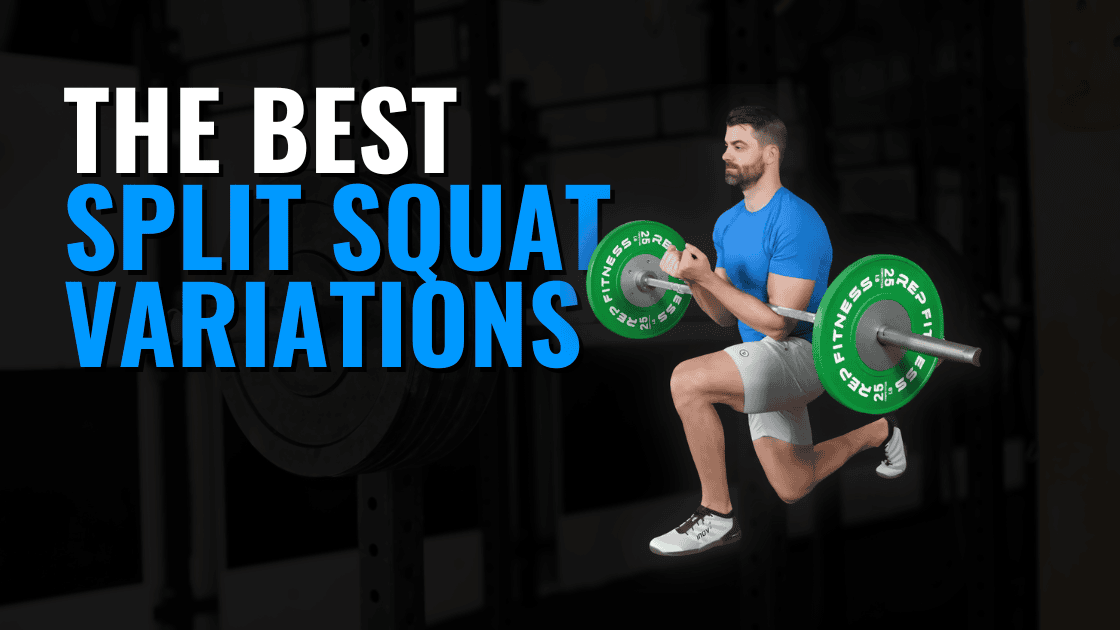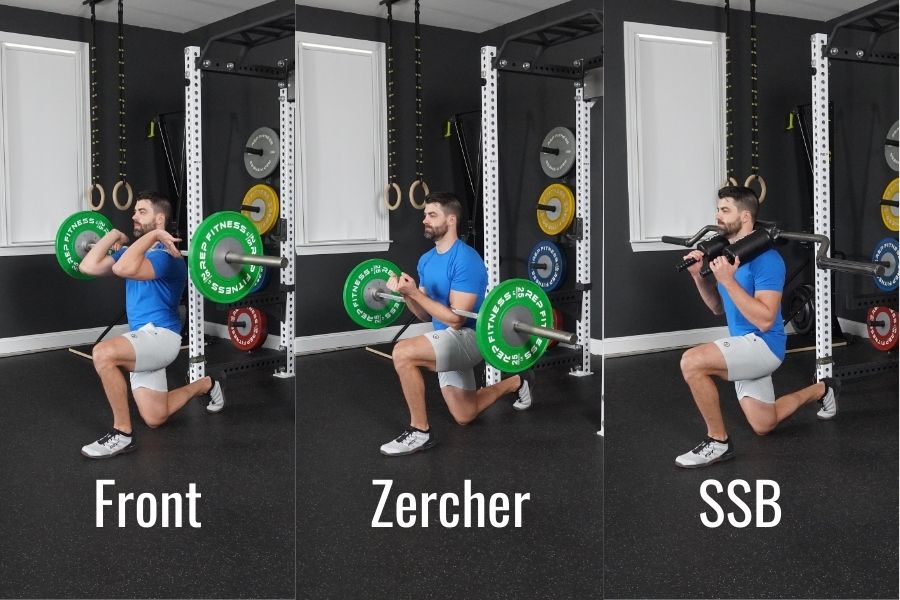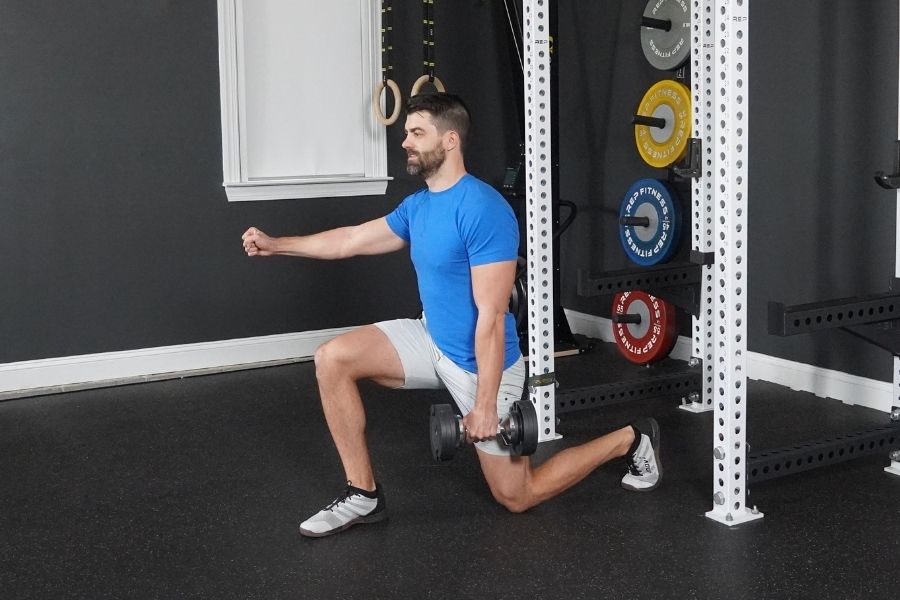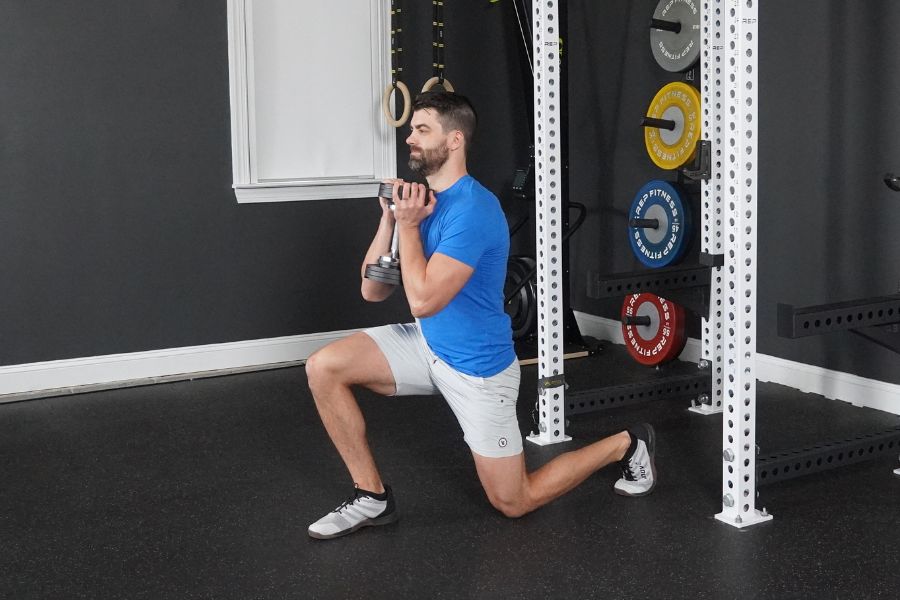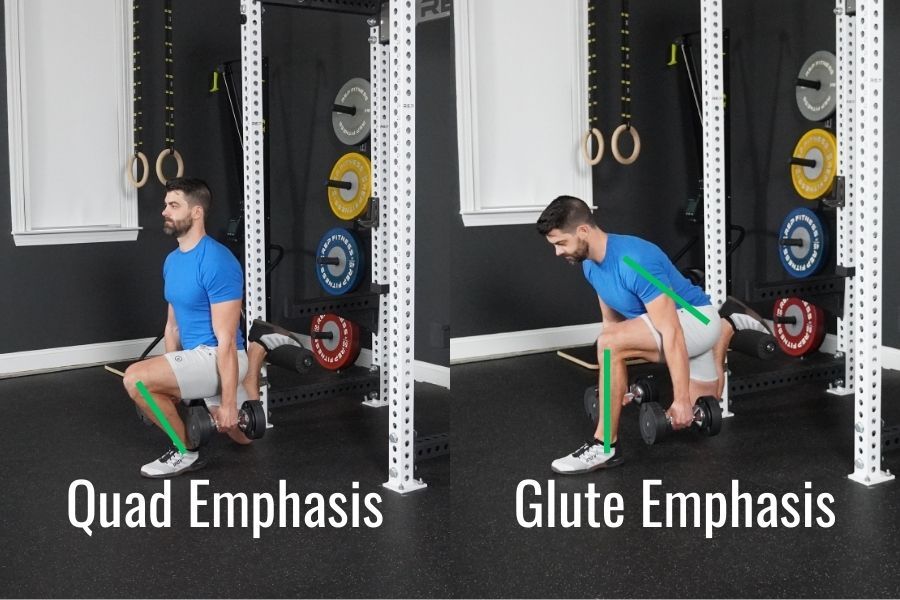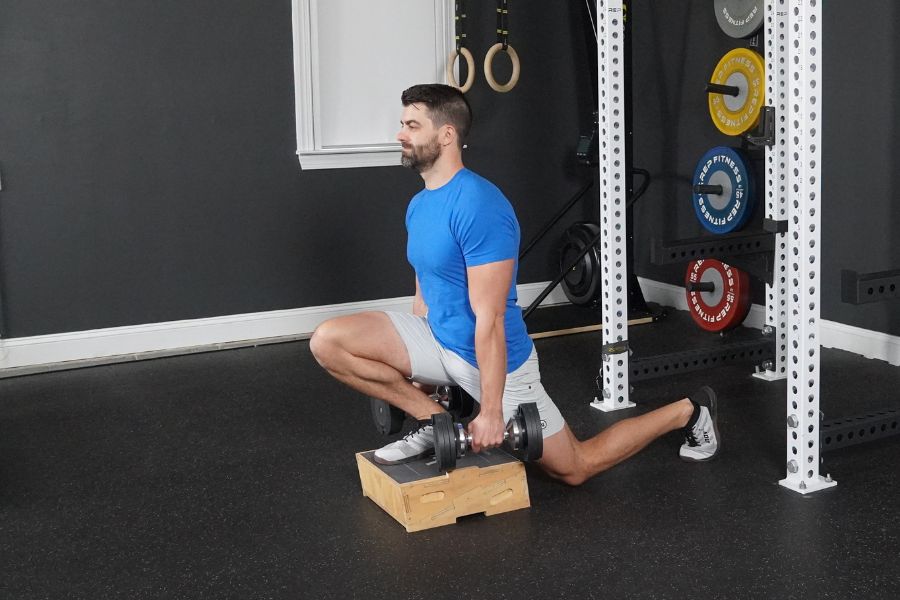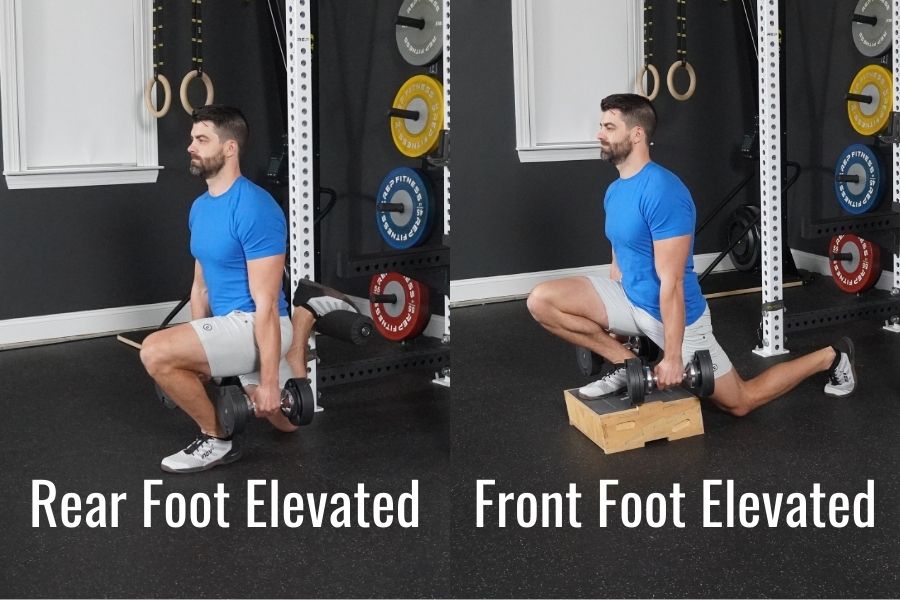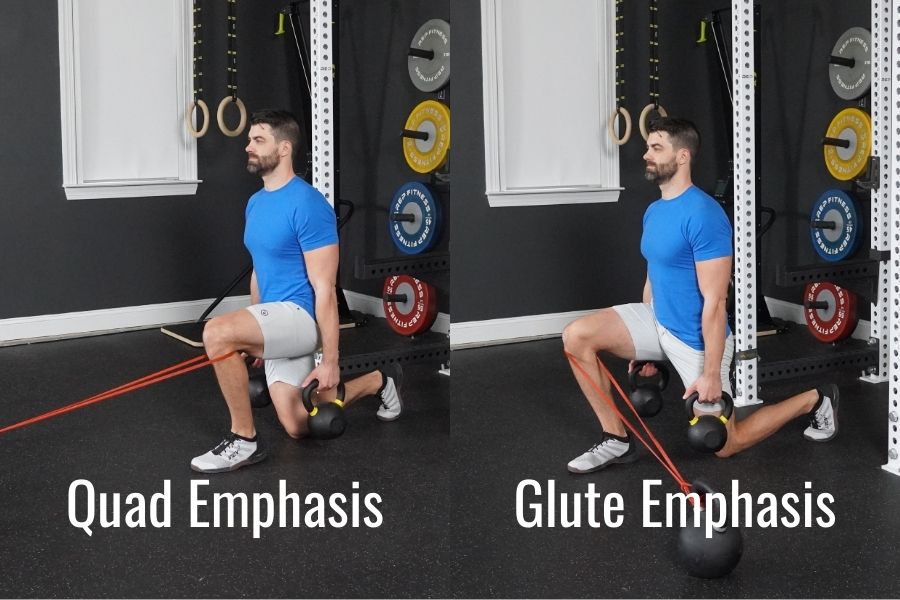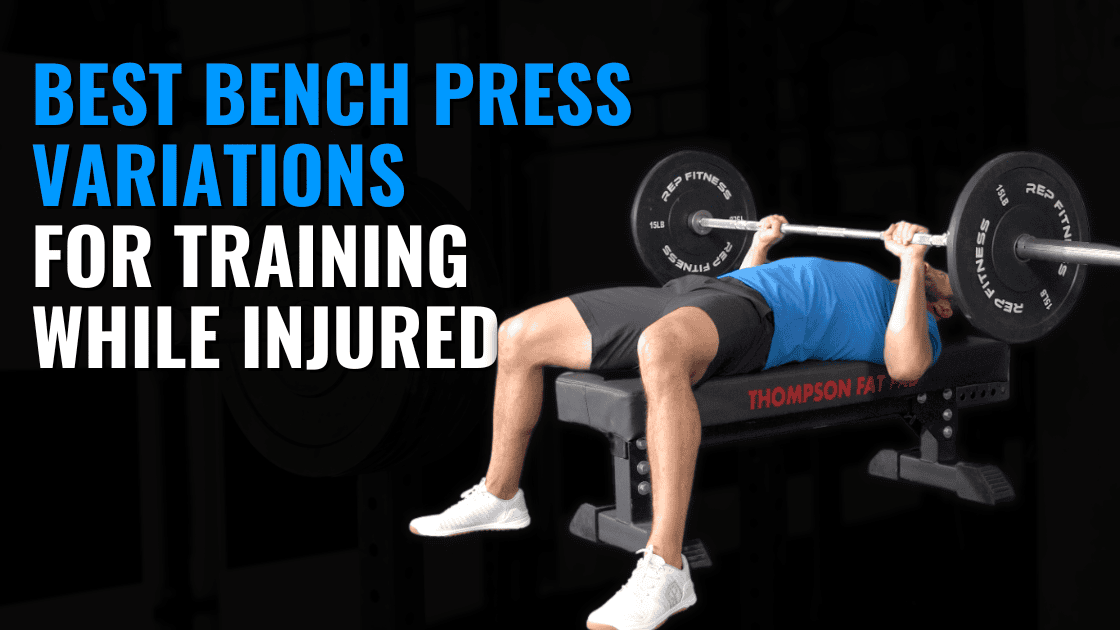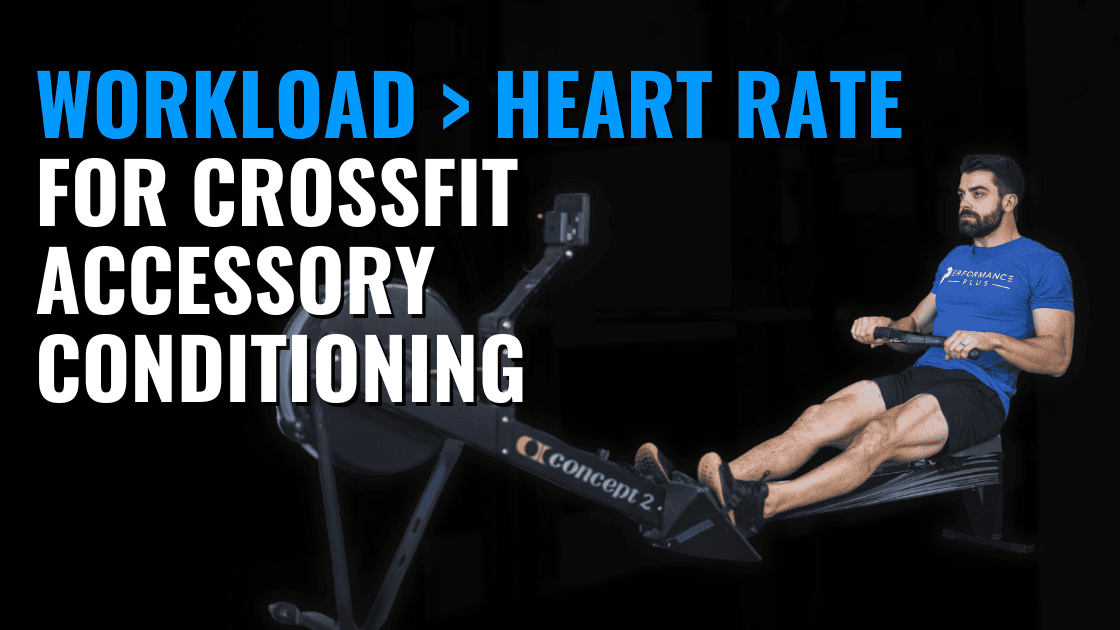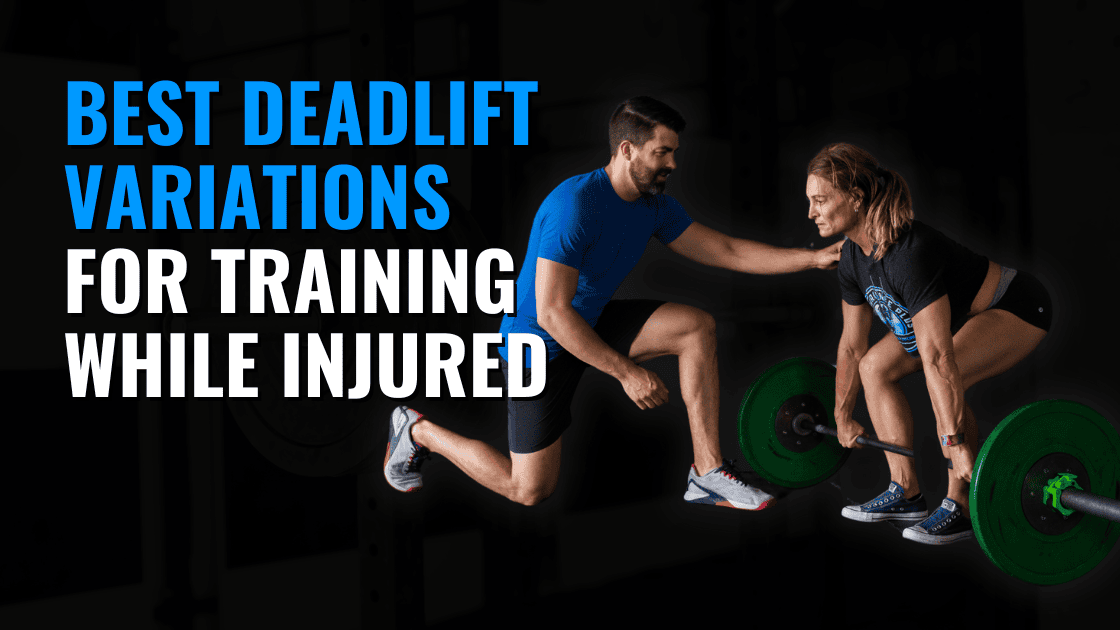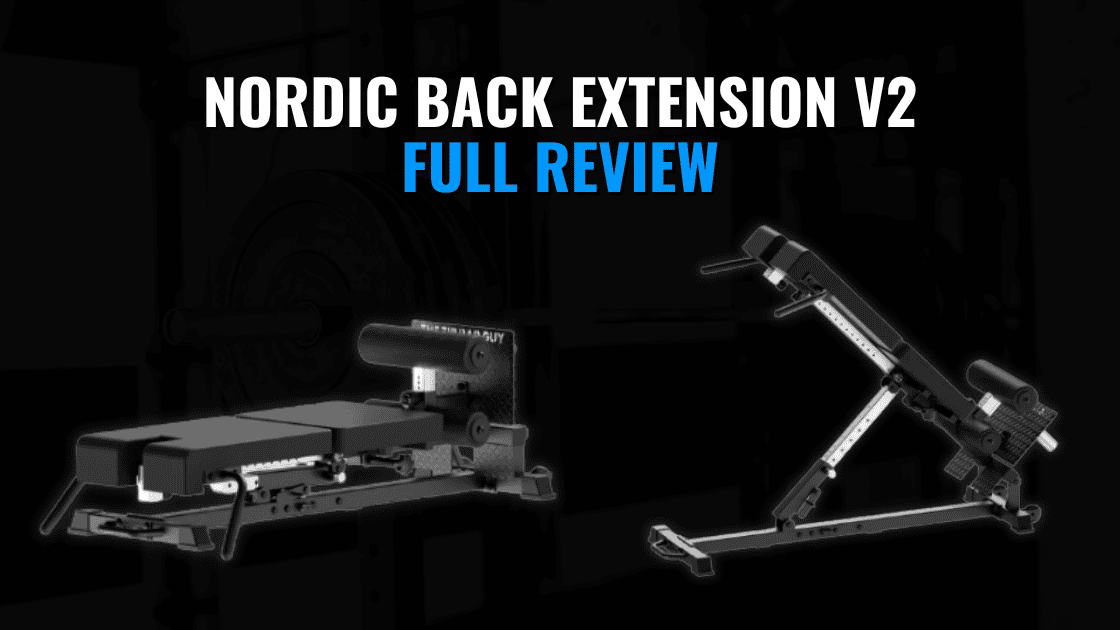The split squat is one of the best exercises to build strength, improve sports performance, and recover from injuries. In this article, we’ll look at different ways to perform the split squat by changing the load, body position, or adding bands. Each variation targets muscles differently, so you can choose the one that fits your goals.
The Best Split Squat Variations
Split Squat Barbell Position
Changing how you hold the weight can greatly affect how the split squat feels and which muscles work the hardest.
Back Rack Split Squat
This is the most common version, where the barbell rests on your shoulders. It lets you lift the most weight and isn’t limited by how strong your grip is.
Front Rack, Zercher, or Safety Bar
These three variations position the load slightly in front of the body. This works your upper back muscles more, which for some can get tired before your legs. This is good if you want to strengthen your back, but it might not be ideal if you’re focusing on your legs.
Dumbbells or Kettlebells at Your Sides
Holding weights in your hands makes grip strength the limiting factor. For this reason, it’s better as a secondary exercise rather than your main strength movement.
If you want to work your legs harder, hold weights in both hands. To target the side of your hips (glute med), hold the weight in the opposite hand of your working leg.
Goblet Split Squat
Probably the least effective loading position as you will be more limited by upper body strength than lower body with the goblet positioning.
Adjusting Your Split Squat Torso Angle and Knee Position
How you angle your torso and position your knees changes which muscles get the most work.
- For Glutes: Keep your front shin vertical and lean your torso forward.
- For Quads: Drive your knees forward over your toes and keep your torso upright.
Knees Over Toes Split Squat
This version stretches your back leg and ankle while focusing on your quads. Keep your back leg straight and push your front knee as far forward as possible. If you have limited mobility, try raising your front foot or heels.
Front vs. Rear Foot Elevated Split Squats
You can elevate your front or back foot to make the split squat more challenging or to target different muscles.
Rear Foot Elevated (Bulgarian Split Squat) – Placing your back foot on a bench or box makes your front leg do more of the work. This variation reduces pressure on your spine and allows you to use lighter weights for the same leg workout.
Front Foot Elevated – Raising your front foot increases your range of motion, which stretches your muscles more and works your glutes and quads harder. It also helps improve ankle flexibility.
Band Resisted Split Squat Variations
Using resistance bands can change how the split squat feels and which muscles work the hardest.
- Band Pulling Inward: Place a band around your knee, pulling it inward to strengthen the side of your hips. This helps if you have knee valgus issues or glute med weakness / tendinopathy.
- Band Pulling Forward: A band pulling forward focuses more on your quads. This is useful for rebuilding quad strength after surgeries like ACL repairs.
My Top Five Split Squat Variations
If we combine all of the above and had to choose the best setups, here are the five I use most frequently:
- Back Rack RFESS – This variation allows us to lift heavy weights with a big emphasis on the front leg getting maximum load.
- RNT Squat Split Squat – my go-to variation when an athlete needs extra quad work. Push the front knee forward during the descent and drive it back into the band on the way up.
- Knees Over Toes Front Foot Elevated – another great quad variation, but I like this to work on ankle mobility or for athletes with chronic quad weakness after surgeries like ACL reconstructions. This helps build the quad and gets the athlete more comfortable with knee-over-toe movements.
- Zercher Split Squats – these are rough! They’ll build leg and upper back strength.
- RNT Band Suitcase Split Squat – the combination of the band pulling the knee in and the weight held in the opposite hand of the working leg is great for lateral hip strengthening. This is a go-to for athletes struggling with glute med tendinopathy.
Conclusion
The split squat is a powerful and flexible exercise. By changing how you hold the weight, positioning your body, or adding bands, you can customize it to meet your fitness goals. Try these variations to challenge your muscles in new ways!

